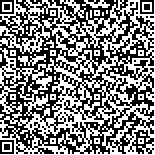下载中心
优秀审稿专家
优秀论文
相关链接
摘要

使用LiDAR单一数据进行点云分割工作时,基于斜率的严格分割LiDAR点云的方法不能很好的适应复杂地物 的分类工作。本文将LiDAR粗分割后的点云转换为高度图像和反射强度图像,并求取高度图像GLCM高度纹理。将4 种GLCM高度纹理、地面粗糙系数、平均高度和平均反射强度共7种纹理作为识别地面覆盖物的特征,并利用后向传播 神经网络(BP-ANN)方法对LiDAR数据进行地物识别。实验表明,这种方法能够从LiDAR独立数据源中有效的实现地 物分类,实验获得的精度大于90%。与传统的最大似然法进行对比,BP-ANN的分类精度高于最大似然法。当预设地 面类型能同时满足被光学影像和LiDAR数据识别的条件时,LiDAR高度纹理分类与光学影像分类结果的一致性达到 76.5%。
The method of strict slope threshold algorithm is not suffi cient to achieve complex object identifi cation or ground features classifi cation from LiDAR data. In this research, artifi cial intelligence is used to classify the ground features based on the LiDAR height texture. Average elevation image, average intensity image and ground roughness index image are derived from LiDAR points. Then, 4 GLCM texture features including entropy, various, second moment and homogeneity texture are measured. Finally, BP-ANNs are used to classify the texture measure into fi ve ground feature types. A coastal area of Zhujiang Delta, South of China, is taken as the study area. The method employed in this research can effi ciently work with single LiDAR data source and the accuracy of classifi cation result is > 90%, and the classifi cation accuracy of Maximal Likelihood method (ML) is 86.8% for comparison. When the result of ANNs classifi cation is compared with the result of optical image classifi cation, it can be found that 76.5% sample points are in accord.

